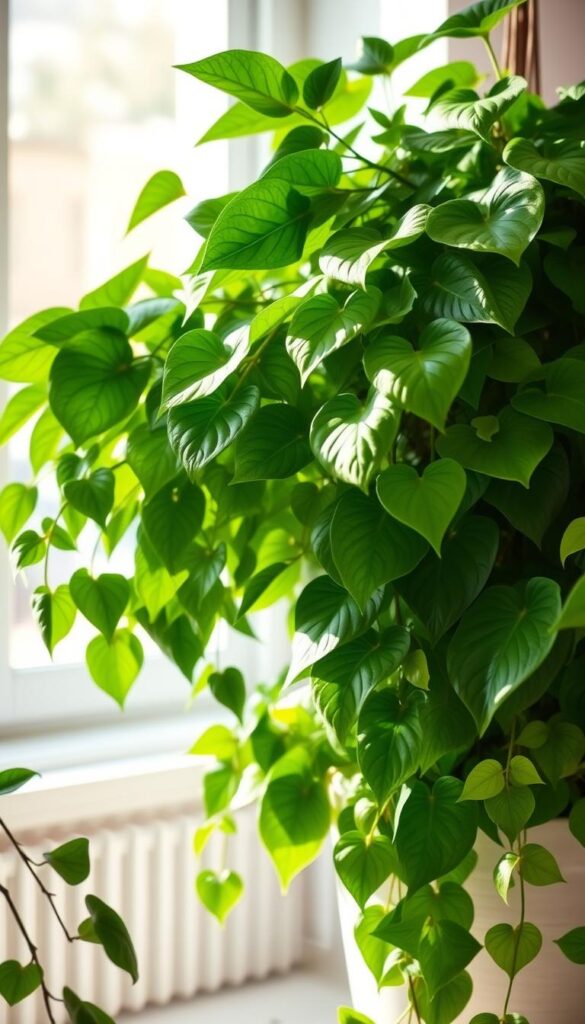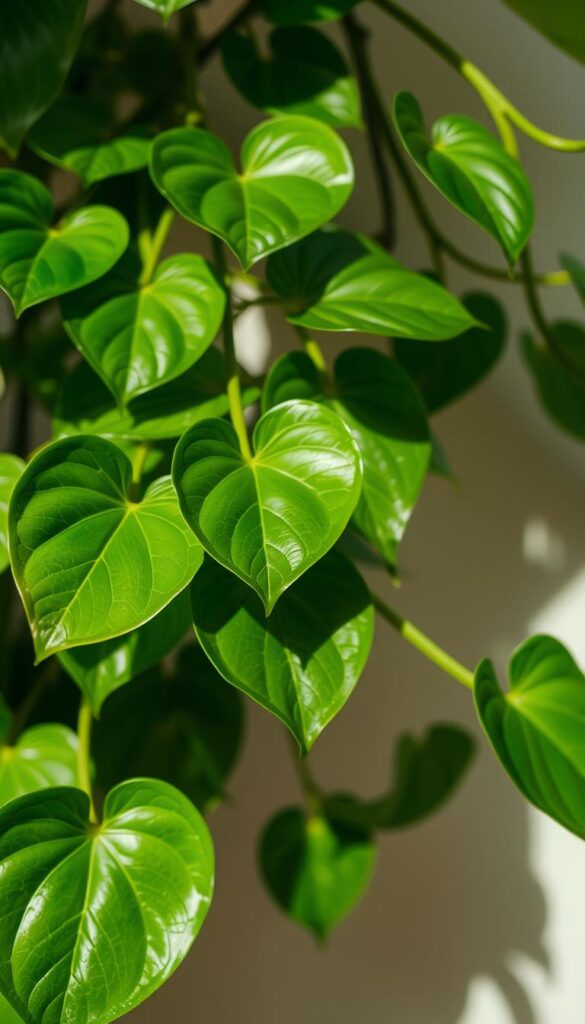I still remember the day I brought home my first pothos plant. It was a small, delicate vine with heart-shaped leaves, and I was excited to watch it grow. But as time passed, I noticed its leaves losing their vibrancy and the vines slowing their climb. That’s when I realized the importance of proper fertilizing to keep my pothos thriving.
Through trial and error, I discovered that using the right fertilizer can make all the difference. A balanced N-P-K ratio, like 20-20-20 or 10-10-10, provides the nutrients my pothos needs to flourish. I also learned that both liquid and granular fertilizers have their benefits—liquid for precise application and granular for steady release.
Timing is key. During the active growing season in spring and summer, I make sure to fertilize regularly. This keeps the soil rich in nutrients and ensures my plant stays healthy. I also monitor how much water I give it, as overwatering can wash away the fertilizer.
Now, my pothos has lush, vibrant foliage and strong vines that brighten up my indoor space. It’s amazing how the right care can transform a plant. In this article, I’ll share my simple, effective tips to help you achieve the same stunning results with your pothos plant.
Why Fertilizing Matters for My Pothos
Just like any living thing, my pothos plant needs the right nutrients to stay healthy and thrive. Over time, the soil in my pot loses its nutrient richness due to watering and the plant absorbing what it needs. This natural depletion means my pothos requires a little extra help to keep its leaves vibrant and its growth strong.
Nutrient Needs and Soil Depletion
A healthy pothos plant relies on essential minerals like nitrogen, phosphorus, and potassium. Nitrogen helps with leaf growth, while phosphorus supports root development and blooming. Potassium aids in overall disease resistance. Without these nutrients, my plant might start showing signs of struggle, like yellowing leaves or slower growth.
How Fertilizer Boosts Growth and Foliage
Fertilizing my pothos ensures it gets all the necessary nutrients that the soil can’t provide anymore. During the active growing season in spring and summer, regular fertilizing keeps the soil rich and promotes lush, vibrant foliage. I’ve noticed a significant improvement in my plant’s health and appearance since I started fertilizing regularly.
- Nutrient depletion in potting soil impacts my pothos and necessitates regular fertilizing.
- Essential minerals like nitrogen, phosphorus, and potassium are vital for healthy growth.
- Signs like yellowing leaves or slowed growth signal that it’s time to fertilize.
Effective Pothos Fertilizing Tips for Vibrant Foliage
Fertilizing my pothos plant is one of the simplest ways to ensure it stays healthy and vibrant. By following a few key tips, I can provide my plant with the nutrients it needs to thrive.
Timing: Seasonal Feeding Best Practices
During the spring and summer, my pothos is in its active growing season. This is when it needs the most nutrients. I fertilize my plant once a month during these seasons, using a balanced fertilizer like 20-20-20. In the fall and winter, when growth slows down, I stop fertilizing to give my plant a rest.
Identifying Signs of Underfeeding
If my pothos starts showing signs of underfeeding, such as yellowing leaves or stunted growth, it’s time to fertilize. I also watch for pale leaves, as this can indicate a lack of essential nutrients.
Avoiding the Risks of Over-Fertilization
Over-fertilizing can harm my pothos, causing burned roots and leaf scorch. To avoid this, I always follow the instructions on the fertilizer label and use the recommended dose. If I’m unsure, I start with a smaller amount and gradually increase as needed.
| Season | Fertilizer Frequency | Recommended Fertilizer Type |
|---|---|---|
| Spring/Summer | Once a Month | 20-20-20 Balanced Fertilizer |
| Fall/Winter | None | – |
By sticking to this schedule and monitoring my plant’s health, I can ensure my pothos stays lush and vibrant all year round.

Choosing the Best Fertilizer and Application Methods
When it comes to keeping my golden pothos thriving, selecting the right fertilizer is just as important as knowing when to apply it. I prefer using products specifically formulated for houseplants and golden pothos, as they are tailored to meet the plant’s needs.
Liquid vs. Granular Options
Liquid fertilizer offers flexibility, allowing me to adjust the strength as needed. For example, I often use a balanced 20-20-20 formula at half the recommended strength to avoid over-fertilizing. Granular fertilizers, on the other hand, provide a slow release of nutrients, making them a great option for long-term feeding.
My experience has taught me that a balanced N-P-K ratio is essential. A 20-20-20 or 10-10-10 ratio ensures my plant gets the necessary nutrients for healthy stem and root development. I always read the instructions carefully to avoid over-application, which can harm the plant.
| Fertilizer Type | Pros | Cons |
|---|---|---|
| Liquid Fertilizer | Flexible application, quick absorption, easy to adjust strength | Requires frequent application, can be messy |
| Granular Fertilizer | Long-lasting, less frequent application, promotes steady growth | Slow release may not provide immediate results |
By choosing the right fertilizer and following the instructions, I’ve noticed significant improvements in my golden pothos’ health and appearance. Whether I’m using liquid or granular, the key is to provide balanced nutrients without overdoing it.
Fine-Tuning My Fertilizing Schedule and Plant Responses
Observing my pothos plant’s reactions has become a key part of my care routine. Over time, I’ve learned to recognize when it needs more nutrients and when it’s getting too much. This approach has helped me refine my fertilizing schedule to meet its specific needs.
Recognizing Your Pothos’ Nutrient Signals
The first step in adjusting my fertilizing routine is monitoring my plant’s health. I check the leaves regularly for color changes—pale or yellowing leaves often signal a lack of nitrogen. If the plant’s growth slows down, it might be time to add more fertilizer. On the other hand, if the leaves turn brown or crispy, I know I might be over-fertilizing.
Adjustments According to Spring and Summer Growth
During the active growing season in spring and summer, my pothos thrives with a monthly dose of balanced fertilizer. I prefer a 20-20-20 N-P-K mix, which provides equal amounts of nitrogen, phosphorus, and potassium. This balanced approach supports healthy leaf growth, strong roots, and vibrant foliage.
In winter, when the plant is dormant, I reduce fertilizing to every couple of months. This gives the roots a chance to rest and prevents the buildup of excess nutrients in the soil, which can harm the plant.
By paying attention to these signals and adjusting my schedule, I ensure my pothos stays healthy and continues to flourish throughout the year.

- Monitor leaf color for nutrient signals.
- Adjust fertilizer dosage based on seasonal growth.
- Avoid over-fertilizing during the dormant season.
My Final Thoughts on Achieving Lush Pothos Plants
After nurturing my golden pothos for years, I’ve learned that the right fertilizer and careful timing are key to its success. By sticking to a balanced N-P-K ratio and adjusting my schedule with the seasons, I’ve seen my plant thrive.
It’s important to watch for signs like yellowing leaves, which signal your plant might need more nutrients. Remember, over-fertilizing can harm your pothos, so always follow the instructions and start with a smaller dose if unsure.
Whether you prefer liquid or granular fertilizer, the goal is to provide steady nutrients without overwhelming the soil. This balanced approach, along with proper watering and sunlight, will help your golden pothos grow lush and vibrant.
Take the lessons I’ve learned and adapt them to your own routine. With patience and attention, you can enjoy the beauty of a thriving, healthy pothos in your home.
